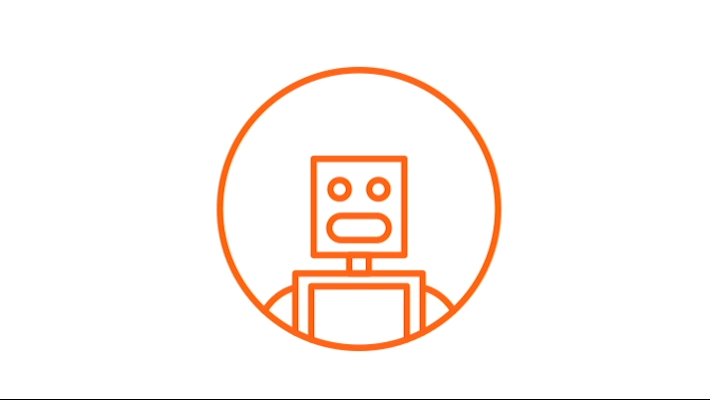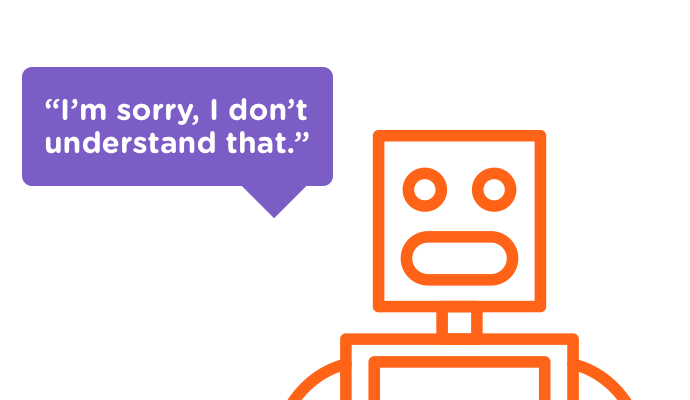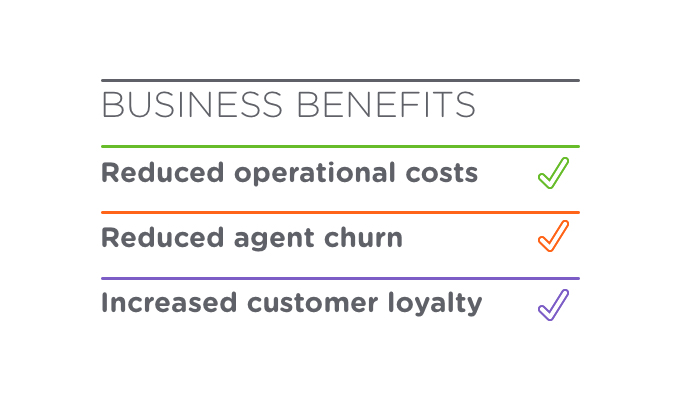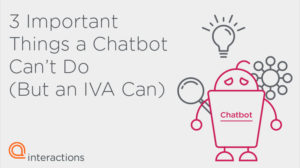Chatbots
Chatbots for Customer Service

What is a chatbot?
Chatbots are designed to simulate how a human would behave in a conversation. These pre-programmed automated interfaces communicate on text-based channels, such as Facebook Messenger, Skype, Slack, WeChat, and more. The bots are programmed to pull replies that match the most amount of keywords or the most similar wording patterns based on what has been composed by the customer. This creates a quick, but generic response to a customer’s questions.
Chatbots in Customer Service
For a while, chatbots were anticipated to be the next big thing in customer care. By automating a customer experience that was often filled with pain points such as long wait times, companies predicted that customers would love the speed of this new technology. According to Forrester, “two-thirds of US online adults say that valuing their time is the most important thing a company can do to give them a good experience.” If the problem of speedy service could be solved, then why isn’t every company jumping on the chatbot bandwagon?


Why do chatbots fail to meet customer expectations?
In reality, “two in three consumers are skeptical of chatbots and their ability to provide just as great an interaction as a live representative,” according to Forrester. As it turns out, customers care about more than just speed. Customers want a complete experience that is effective, convenient, and friendly. Due to the limitations of chatbots only being capable of resolving simple, repetitive tasks, they are not able to provide the accurate outcomes that customers are looking for when they reach out to businesses.
So, by eliminating the wait times that customers often dread, chatbots have in fact created more pain points in the customer care experience.
What can companies do about chatbot failure?
Understanding the customer experience is a holistic journey is the first step to circumventing problems created by chatbots. It’s not just about having automation technology in place, but rather technology that is effective in eliminating pain points and creating a more cohesive overall journey.
Implementing solutions that are opti-channel, understand intent, and integrate with backend systems to deliver personalized conversations are necessary for truly transformational experiences.
Opti-channel: Unlike chatbots and more traditional automation systems, opti-channel solutions are designed using data to offer the most preferred channel at different touchpoints. As an advancement on omnichannel technology, it still allows for contextual communication across different channels, so that customers can pick up a conversation where they left off, and choose the channel that is most convenient for them.
Understanding intent: The majority of chatbots fall flat because they are not able to recognize what the user is actually saying. More intelligent solutions, often supported by Conversational AI and Natural Language Processing, give more advanced solutions the ability to interpret what the user is saying for a more accurate response.
To take it one step further, our Intelligent Virtual Assistant is also supported by our patented Adaptive Understanding™ technology. Learn more about it here. Personalization: Integrating with backend business systems, such as customer relationship management tools and data pools, can give these automated solutions the fodder that they need to make customers feel valued.
Beyond chatbots: How Conversational AI can be used to elevate customer experience
While chatbots can be seen as glorified FAQ machines, there are applications that can go beyond this simple keyword-response algorithm and actually produce intelligent responses, on par with a human.
These applications are powered by Conversational AI. Conversational AI consists of multiple technologies that work in tandem to understand, interpret, and then produce a response based on predetermined business rules. With every interaction, it collects data to improve future conversations, through machine learning. To learn more about Conversational AI and how it works, check out this page.
These more intelligent applications improve customer experience in a myriad of ways, such as providing self-service, decreasing wait times, and increasing personalization.
- Self-service: Allowing customers to complete tasks on their own time gives them the convenience and freedom they desire. With an intelligent self-service application, customers do not have to wait in a queue or plan their call around business hours. As a plus, agents are freed up to spend more time on customers who need their expertise.
- Wait times: Customers don’t want to wait. Traditional chatbot technology may alleviate waiting at the beginning of the interaction, but without truly understanding intent or being able to self-serve customers, customers will end up waiting for a live agent later in the process.
- Personalization: Agents simply do not have the ability to sort through and interpret huge amounts of data for personalization. That’s where Conversational AI comes in. By analyzing past customer preferences and patterns, a Conversational AI application can determine the opportunities that have the greatest likelihood to drive up-selling and cross-selling.


Business Benefits
Also, businesses can see benefits such as decreased operational costs, less agent churn, and increased customer loyalty in addition to improved customer experience.
- Operational Costs: Conversational AI applications are able to handle a much greater volume of customer interactions, as any automated system can. And because IVAs are able to handle so many more customer interactions without increasing costs from live agents or overtime, the result is decreased operational costs per contact. But what sets Conversational AI applications apart from other automated customer service technologies which can also handle unlimited interactions, like chatbots, is their ability to speak conversationally with customers which results in more productive conversations.
- Agent Churn: Because a Conversational AI application can take over mundane and repetitive tasks, agents have more time to focus on stimulating and rewarding customer interactions. This translates to greater job satisfaction and lower agent turnover.Customer Loyalty: Improved customer experience leads directly to increased loyalty. With Conversational AI applications, customers have greater satisfaction and feel more valued, increasing the likelihood of coming back.



